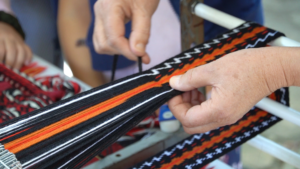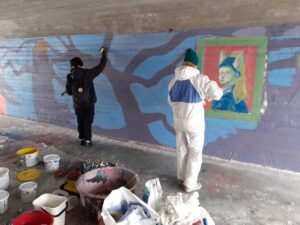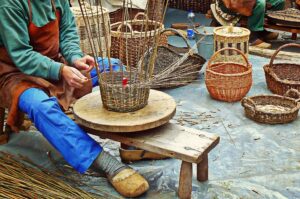Article by UJM
In September 2025, the MOSAIC partners gathered in Albena, Bulgaria, for one of the project’s regular transnational meetings. This one, however, stood out for a very special reason: it was the moment when the consortium came together to rethink and improve the Crafting the Future European Arts & Crafts Observatory. The Observatory is one of MOSAIC’s most ambitious results, designed as a European hub for resources, training, research, and networking in the field of arts and crafts. After several months of testing, which generated more than 185 responses collected through online questionnaires and focus groups in France, Canada, and beyond, it became clear that the platform still needed refinement. The workshop in Albena was therefore conceived as a space to transform this valuable feedback into a practical, collaborative plan of action.
The Observatory covers many dimensions, and each of them reflects different needs within the crafts ecosystem. To address this diversity, partners were divided into six thematic groups, each working on a distinct section of the Observatory during a dedicated session held in this meeting. Some focused on Share your Experience section, the space where students, artisans, and professionals can publish their personal stories. Others worked on the Business Hub, which brings together resources, contacts, and opportunities for employability and entrepreneurship, or on the Expert Journal, dedicated to share insights and reflections from researchers and practitioners. A fourth group examined the Training Section, where the courses developed within MOSAIC are hosted on Moodle, while another group explored questions of Liveliness and Dynamism, reflecting on how to keep the platform engaging and up to date. Finally, a group was dedicated to Ergonomics and Visuals, concentrating on usability, accessibility, and the overall design experience.
Each of these groups gathered MOSAIC partners according to their expertise, ensuring that the broad skills of the consortium – from vocational schools and universities to chambers of crafts and cultural organisations – were fully mobilised. To support the work, UJM (Eva Libran Perez) relied on a methodology inspired by design thinking and serious play, using custom-made visual tools that were designed specifically for the occasion.
The session unfolded in four steps. First, through a “Goals Card Game”, participants reconsidered the initial objectives of their section and assessed whether they were still relevant in light of the feedback. They then moved to an “Action Plan Canvas”, where they selected a handful of short-term priorities that could realistically be implemented over the coming months. In a third stage, they identified the main obstacles likely to slow progress, as well as the resources and support that would be needed to overcome them. Finally, they had the opportunity to provide additional ideas or ambitions on a “Bonus Canvas”, a free creative space designed to capture spontaneous insights.
The atmosphere in this workshop was both constructive and energising. Far from a simple brainstorming exercise, it was a collective commitment to move from feedback to tangible actions towards improvement. Discussions revealed the richness of perspectives across the consortium: some partners emphasised the need for clearer templates to collect testimonies, others called for better navigation and translation in the training section, while others still stressed the importance of making the site more visual, dynamic, and user-friendly. What united all groups was the recognition that the Observatory must evolve into a living and engaging resource, one that truly serves its diverse audiences.

The results of the Albena workshop now form the backbone of a collaborative action plan. This plan sets responsibilities, encourages cross-partner collaboration, and ensures that the next phase of development will remain grounded in user needs. From more coherent editorial practices in the Expert Journal to stronger visibility for crafts professionals in the Business Hub, from technical fixes in Moodle to more dynamic storytelling on the platform’s main pages, every improvement is anchored in the insights that emerged during this workshop.
In many ways, the Albena session confirmed one of MOSAIC’s guiding principles: innovation in crafts is not only about what happens in workshops and studios, but also about how we design tools, platforms, and collaborations.
By embracing participatory and playful methods, MOSAIC partners succeeded in creating a shared vision for the future of the Observatory. The work that stared in in Bulgaria will continue in the months ahead, ensuring that Crafting the Future grows as a relevant, inspiring, and sustainable platform for the entire crafts community.








